Facts About Air Ambulance Services

The Essential Guide to Flying After Plastic Surgery
October 31, 2024
Air ambulance services play a crucial role in emergency healthcare, providing rapid transport and advanced medical care to critically ill or injured patients when time and specialized treatment are of the essence. This guide explores the facts behind air ambulance operations, shedding light on how these life-saving services work and their importance in critical care.
- Purpose: Air ambulances are designed to transport critically ill or injured patients who need quick, specialized medical care. In emergencies, they can bypass traffic and geographic barriers, making them essential for time-sensitive cases such as heart attacks, strokes, severe trauma, or complex injuries.
- Types of Aircraft: Air ambulances use helicopters and fixed-wing airplanes, each suited for different scenarios. Helicopters are ideal for quick access in emergencies, such as car accidents or mountain rescues, covering distances up to 150-200 miles. Fixed-wing aircraft are used for long-distance transfers, often exceeding 200 miles, and offer more space for complex equipment and patient care.
- Medical Equipment: Air ambulances carry life-saving equipment comparable to what you’d find in an ICU. This includes ventilators, defibrillators, oxygen tanks, infusion pumps, and advanced monitoring devices. The compact yet powerful equipment is tailored for the aircraft’s space constraints and is capable of functioning under the pressures of flight conditions.
- Specialized Medical Staff: The medical crew typically includes paramedics, critical care nurses, and, in some cases, doctors with specialized training in emergency and critical care. They can perform advanced procedures in transit, including intubation, administering IV medications, and even blood transfusions when needed.
- Rapid Response Time: Helicopter air ambulances are often dispatched from dedicated bases and can be airborne within minutes. This fast response can make a significant difference in trauma cases or severe medical events, particularly when reaching patients in rural or isolated areas.
- Long-Distance Transfers: Fixed-wing air ambulances, usually turboprop or jet aircraft, enable patient transfers across long distances. They are often used to move patients between states or countries, allowing individuals to access specialized treatments unavailable locally or to return home for continued care.
- Cost: Air ambulance services can be extremely costly due to fuel, specialized crew, and the maintenance of high-tech medical equipment. Depending on distance and care needs, costs can range.
- Insurance Coverage: Many health insurance policies include air ambulance coverage for emergencies. Coverage varies widely, with some insurers paying only a portion, and some policies not covering air ambulances at all unless deemed medically necessary.
- Remote Locations: Air ambulances are often the only lifeline for patients in remote or rugged terrain, like mountainous regions, isolated islands, or vast rural expanses where hospitals are far away. In these cases, air ambulances are sometimes the only way for patients to access critical care within the first hour following a traumatic injury, which is crucial for survival.
- International Repatriation: Air ambulances are commonly used for repatriating patients who fall ill or sustain injuries abroad, especially when they need specialized care or would benefit from being closer to family. This service involves careful coordination across countries to ensure a smooth transfer through airports, customs, and hospitals.
- Weather-Dependent: Air ambulances operate under strict safety protocols, and adverse weather conditions like heavy rain, snow, or fog can impact their ability to fly. Air ambulances can sometimes fly in low-visibility conditions, but helicopters are usually grounded for safety in poor weather.
- Military Origins: The concept of air ambulances originated in the military. MedEvac (medical evacuation) missions were common in both World Wars and especially during the Vietnam War, where helicopters were used to swiftly transport wounded soldiers from the battlefield to medical care.
- Speed Advantage: Air ambulances travel much faster than road ambulances, averaging speeds between 140 and 160 mph for helicopters, and even faster for fixed-wing planes. This speed is crucial for conditions where every second counts, such as trauma or heart attack cases.
- Coordination with Ground Services: Air ambulances coordinate with ground EMS to ensure the patient is quickly moved from the emergency scene or hospital to the aircraft and vice versa. This requires a well-trained team that can communicate effectively to ensure smooth patient handoff during critical situations.
- Specialty Transports: Some air ambulances are configured specifically for pediatric or neonatal care, equipped with incubators and staffed with specially trained pediatric or neonatal nurses and doctors. These transports require additional equipment and expertise to handle the unique needs of infants and children.
- Critical Care En Route: Patients receive comprehensive, ongoing care during the flight. The medical crew may administer IV fluids, medications, respiratory support, or even perform surgical procedures if needed. This level of care is crucial for patients who are unstable or in critical condition.
- Life Support: Air ambulances have advanced life-support capabilities, including portable ventilators, defibrillators, and blood-gas analyzers, which allow the crew to monitor and manage the patient’s vital functions closely, even at high altitudes.
- Telemedicine: Some air ambulance services use telemedicine technology to link with hospitals or specialists for real-time consultations. This can improve decision-making and treatment en route, particularly for rare or complex cases.
- Regulations: Air ambulance services are subject to stringent regulations regarding aircraft maintenance, crew training, and patient safety protocols. Agencies like the Federal Aviation Administration (FAA) in the U.S. and similar bodies worldwide enforce these standards to ensure quality and safety.
- Preventive Role in Remote Areas: In rural and underserved areas, air ambulances are essential for preventive emergency access, allowing patients in isolated communities to receive urgent care quickly. For residents in these regions, air ambulances can be life-saving, as access to nearby medical facilities may not be possible by road.
These detailed insights highlight the complexity, cost, and critical importance of air ambulance services in modern healthcare, especially in time-sensitive, life-threatening situations.




